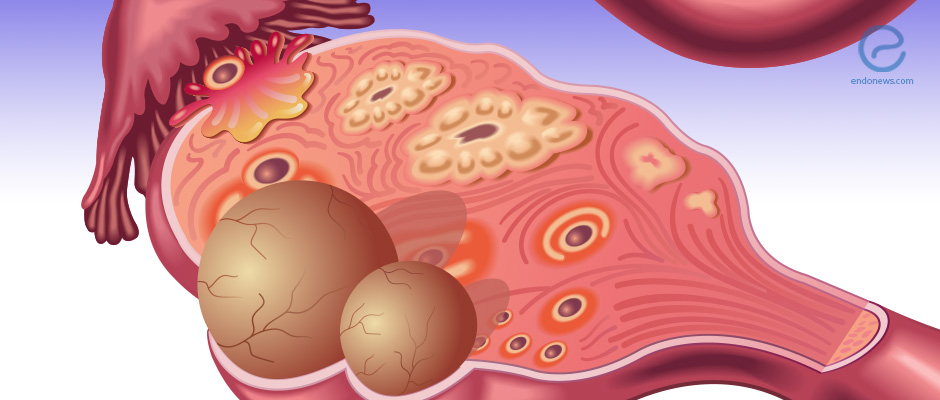Benign Gynecological Tumors in Women with Endometriosis
Feb 28, 2018
The risk for benign gynecological tumors are high in endometriosis, and most of the ovarian endometriomas have a preference for the left side.
Key Points
Highlights:
- This study is evaluating the relationship between endometriosis and the risk of benign gynecologic tumors.
- The second purpose is to analyze the distribution of endometriomas and ovarian cysts in women who suffer from endometriosis.
What’s done here?
- This retrospective study investigated 1,000 women who suffer from endometriosis and underwent surgical treatment, namely laparoscopy or laparotomy, at two different locations.
- The following data were recorded for each patient:
- Age and symptoms of the patients
- Stage and localization of endometriosis
- Classification of ovarian cysts and histological types of benign gynecological tumors
- The participants were also divided into four groups in terms of benign gynecological tumors:
- Ovarian or para-ovarian cysts
- uterine leiomyomas
- adenomyosis
- combination of the above
- Statistical analysis was used to determine the frequency of tumor localization, left or right.
Key results:
- The breakdown of histologically confirmed lesions in women with endometriosis were:
- Endometriomas (295 cases), adenomyosis (172 cases), ovarian cysts (173 cases), Uterine leiomyomas (89 cases).
- Ovarian cysts were most often "serous cysts," the next most common diagnosis was dermoid cysts.
- Left-sided cysts were more common compared to right-sided cysts in women with unilateral endometriomas.
- The overall conclusion reached in the study is that endometriosis could very possibly be associated with increased benign gynecological tumor risk.
- Endometriomas and ovarian cysts are predisposed to the left lateral side.
Limitations of the study:
- This study is retrospective and relies solely on the data entered by different individuals. The data may not be complete or may be incorrectly entered.
Lay Summary
Matalliotaki et al. recently published a paper titled “Coexistence of benign gynecological tumors with endometriosis in a group of 1,000 women” in Oncology Letters.
The study had two main objectives. The first goal was to understand the link between endometriosis and benign gynecologic tumors risk. The second goal of the project was to understand the distribution of endometriomas and ovarian cysts in individuals that have endometriosis.
This retrospective study looked at 1,000 women with endometriosis that had undergone surgical treatment, either laparoscopy or laparotomy. The researchers collected a lot of data for each patient. This data could include age, symptoms, stage of endometriosis, localization, classification of the cysts, and the histological type of the benign gynecological tumor. The participants were also divided into 4 groups depending on their ailment, namely ovarian or para-ovarian cysts, uterine leiomyomas, adenomyosis, or a combination of the aforementioned. Some of the data from this project were also subject to statistical analysis.
The results showed that there were 295 cases of endometriomas, 172 cases of adenomyosis, 173 cases of ovarian cysts, and 89 cases of uterine leiomyomas in women with endometriosis that were included in the study. Women with ovarian cysts were most susceptible to serous cysts and dermoid cysts. Women with unilateral endometriomas were found to have more left-sided cysts than right-sided cysts.
In short, this study proved that women with endometriosis are at increased risk for benign gynecological tumors. Furthermore, this study proved that endometriomas and ovarian cysts are inclined to inhabit the left lateral side.
Research Source: https://www.ncbi.nlm.nih.gov/pubmed/29434846
benign gynecological tumors surgery laparoscopy laparotomy ovarian cysts para-ovarian cysts uterine leiomyomas adenomyosis serous cysts dermoid cysts

